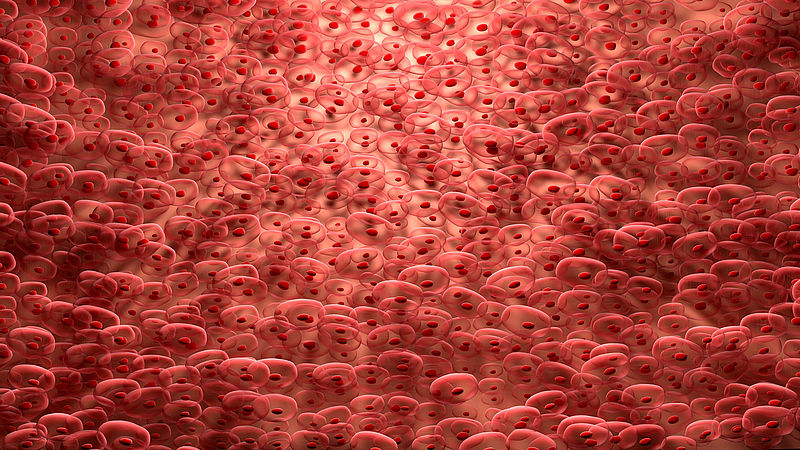Congenital heart defects, myocarditis, and myocardial changes are some of the causes of childhood death. Yet knowledge of the molecular mechanisms involved in pediatric heart disease is still very limited because there is a lack of reference data for normal postnatal heart development in healthy children. Now, single-cell analysis of healthy heart tissue from children ranging from infancy through adolescence aims to fill this critical gap. The Chan Zuckerberg Initiative (CZI) is supporting the international collaborative project between researchers and pediatricians to the tune of a total of $33 million. $1.75 million of this funding will go to the team led by Professor Christine Seidman at Harvard Medical School (HMS) in Boston and Professor Norbert Hübner at the Max Delbrück Center for Molecular Medicine in the Helmholtz Association (MDC) in Berlin.
A child’s heart beats differently
We are therefore delighted that the Chan Zuckerberg Initiative is also supporting our international team with this project.
The heart of a child differs substantially from that of an adult, not just in terms of size. “In the first year of life a whole series of changes occur – such as the infant starting to breathe air immediately after birth,” explains Dr. Henrike Maatz, a scientist in Professor Norbert Hübner’s team at the MDC. This changes the entire circulation, and the heart has to work at a different blood pressure. A child’s heart also beats faster: While an adult’s heart rate is around a steady 70 beats per minute, a child’s heart beats at an average rate of 100 beats per minute, and an infant’s heart at even 130 beats a minute. The researchers will also look at what happens to the heart during puberty.
“We are therefore delighted that the Chan Zuckerberg Initiative is also supporting our international team with this project,” says Professor Norbert Hübner, head of the Genetics and Genomics of Cardiovascular Diseases Lab at the MDC. In all, 17 CZI Pediatric Networks for the Human Cell Atlas from 15 different countries are being funded. Along with their teams at Harvard Medical School and the MDC, the network led by Christine Seidman and Norbert Hübner also includes molecular biologists and physicians from Imperial College London, the University of Chicago, University of Kentucky, and University of Alberta (Canada), as well as Ruhr-Universität Bochum and Helmholtz Zentrum München.
Human Cell Atlas to be expanded to include pediatric single-cell data
CZI was founded in 2015 by Mark Zuckerberg and Priscilla Chan to help solve some of society’s toughest challenges — from eradicating disease and improving education, to addressing the needs of local communities.
It supports projects in the fields of education and science. The 17 CZI Pediatric Networks for the Human Cell Atlas will contribute healthy pediatric single-cell reference data to the Heart Cell Atlas. “Single-cell technologies have incredible potential to accelerate scientific discovery as researchers seek to understand how developmental processes in cells and organs are related to pediatric disease,” says Jonah Cool, CZI Science Program Officer for Single-Cell Biology. “We’re thrilled to welcome the teams of the CZI Pediatric Networks for the Human Cell Atlas to our community of grantees.”
A woman’s heart is different too
For the reference atlas of the adult human heart, the scientists have already isolated and analyzed more than 500,000 cells and nuclei from different cardiac regions of adults. Heart tissue must first be carefully dissociated into individual cells and then encapsulated in droplets together with the necessary reagents so that their RNA can be sequenced in a high-throughput manner. “This allows us to not only see which genes were active in the cell but also to determine – based on the expression profile – which cell type it is: a heart muscle cell (cardiomyocyte), a connective tissue cell (fibroblast) or an endothelial cell which lines the interior surface of blood vessels,” explains Maatz.
By studying cells from the right and left ventricles and atria, the apex, as well as the septum, the wall dividing the heart chambers into right and left sides,researchers have already made many new discoveries. “We have seen that there are numerous subtypes of all known cardiac cell types, which most likely have very different functions,” says Maatz. There are also distinct gender differences: the ventricles of a woman’s heart consist of more muscle and fewer connective tissue cells than those of a man’s heart. This could explain why women are less likely to have cardiovascular diseases.
Translating new knowledge into new therapies
We have seen that there are numerous subtypes of all known cardiac cell types, which most likely have very different functions.
“In our studies of the pediatric heart, we will not only look at age-specific differences but also gender-specific differences and ethnic diversity,” stresses Hübner. The project team will perform comparative analyses of tissue samples with European, African-American and Asian backgrounds.
In addition to the single-cell studies, gene expression in tissue sections will also be analyzed at high resolution. This is necessary if researchers want to understand how cells interact with each other, as they need to determine more precisely how they are spatially arranged relative to each other. “We will need these insights when we later investigate what goes wrong in cell communication in diseased hearts,” explains Maatz. For example, when fibrosis leads to increased formation of connective tissue, causing one of the heart’s ventricle to stiffen,” explains Maatz. This knowledge could also contribute to the development of new therapies. After all, if subtypes in the cell population suddenly become dominant in the diseased heart but are almost nonexistent in healthy heart tissue, these would be perfect targets for new highly specific therapeutic agents.
Source: https://www.mdc-berlin.de/news/press/cell-atlas-pediatric-heartPress Release MDC
Chan Zuckerberg Initiative: chanzuckerberg.com




